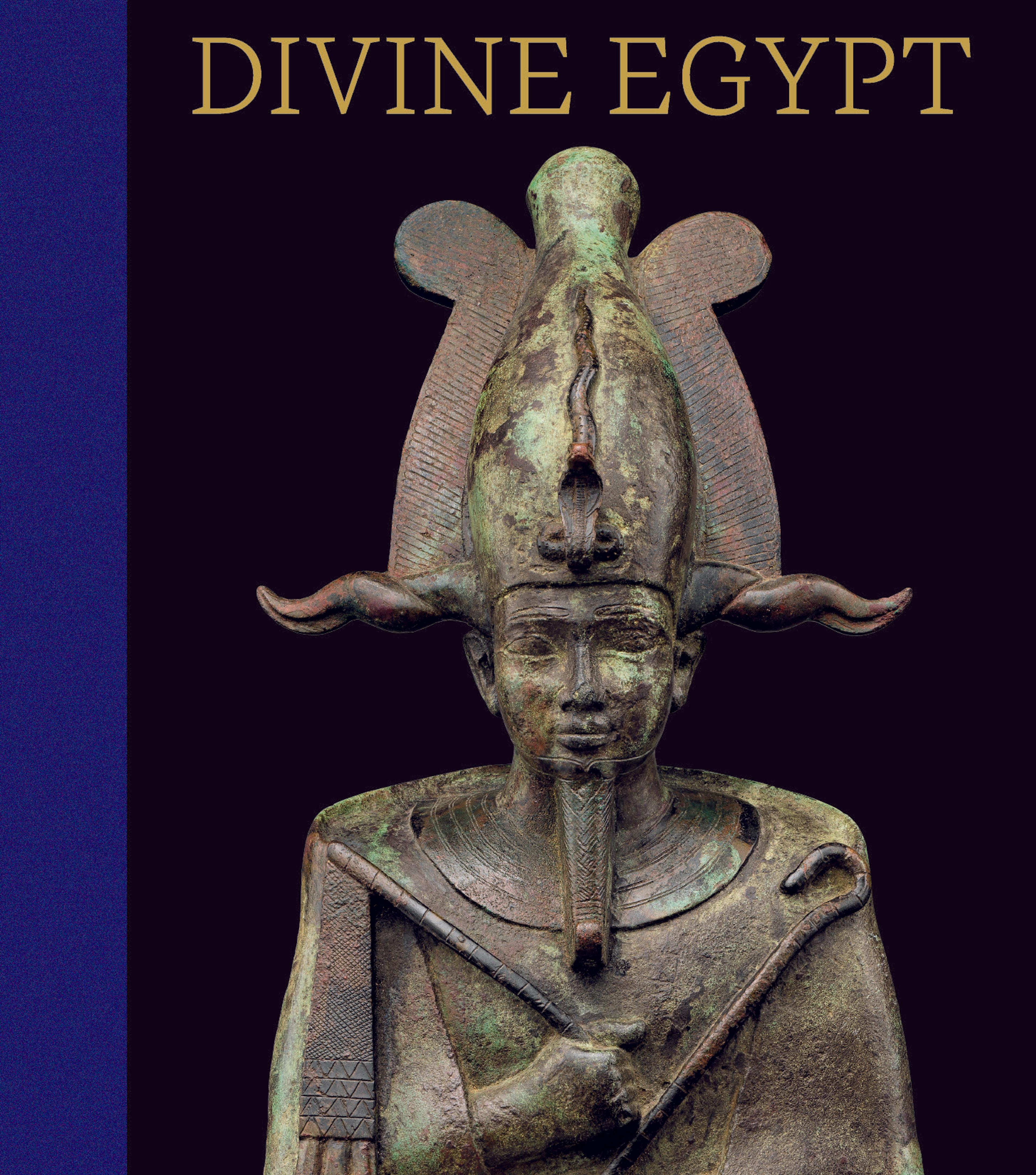Statue of Horus as a falcon protecting King Nectanebo II
The pharaoh Nectanebo II often invoked a very close connection–even a merging–between himself and the falcon god of kingship, Horus. In fact, Nectanebo II was the focus of a cult in which he was referred to as "Nectanebo-the-Falcon," which could indeed be what is represented by this striking conjunction of a powerful falcon and the monarch. This idea seems to be supported by the fact that Horus is not named on the base, only Nectanebo and the god Osiris-Mnevis, at whose sanctuary in Heliopolis the statue may have been erected.
The composition may be read as a rebus of Nectanebo's Egyptian name, Nakhthorheb: nakht, the sword held in the king's left hand; Hor, the falcon; and heb, the festival sign in the king's right hand. The last sign probably refers to the city of Hebyt, which was the site of the great temple constructed by Nectanebo II for Isis, mother of Horus.
The composition may be read as a rebus of Nectanebo's Egyptian name, Nakhthorheb: nakht, the sword held in the king's left hand; Hor, the falcon; and heb, the festival sign in the king's right hand. The last sign probably refers to the city of Hebyt, which was the site of the great temple constructed by Nectanebo II for Isis, mother of Horus.
Artwork Details
- Title: Statue of Horus as a falcon protecting King Nectanebo II
- Period: Late Period
- Dynasty: Dynasty 30
- Reign: reign of Nectanebo II
- Date: 360–343 BCE
- Geography: From Egypt; Said to be from Memphite Region, Heliopolis (Iunu; On), Tomb of a Mnevis bull
- Medium: Metagraywacke
- Dimensions: H. 72 × W. 20 × D. 46.5 cm, 55.3 kg (28 3/8 × 7 7/8 × 18 5/16 in., 122 lb.)
- Credit Line: Rogers Fund, 1934
- Object Number: 34.2.1
- Curatorial Department: Egyptian Art
Audio
3210. God Horus Protecting King Nectanebo II
0:00
0:00
We're sorry, the transcript for this audio track is not available at this time. Please email info@metmuseum.org to request a transcript for this track.
Listen to more about this artwork
More Artwork
Research Resources
The Met provides unparalleled resources for research and welcomes an international community of students and scholars. The Met's Open Access API is where creators and researchers can connect to the The Met collection. Open Access data and public domain images are available for unrestricted commercial and noncommercial use without permission or fee.
To request images under copyright and other restrictions, please use this Image Request form.
Feedback
We continue to research and examine historical and cultural context for objects in The Met collection. If you have comments or questions about this object record, please complete and submit this form. The Museum looks forward to receiving your comments.
